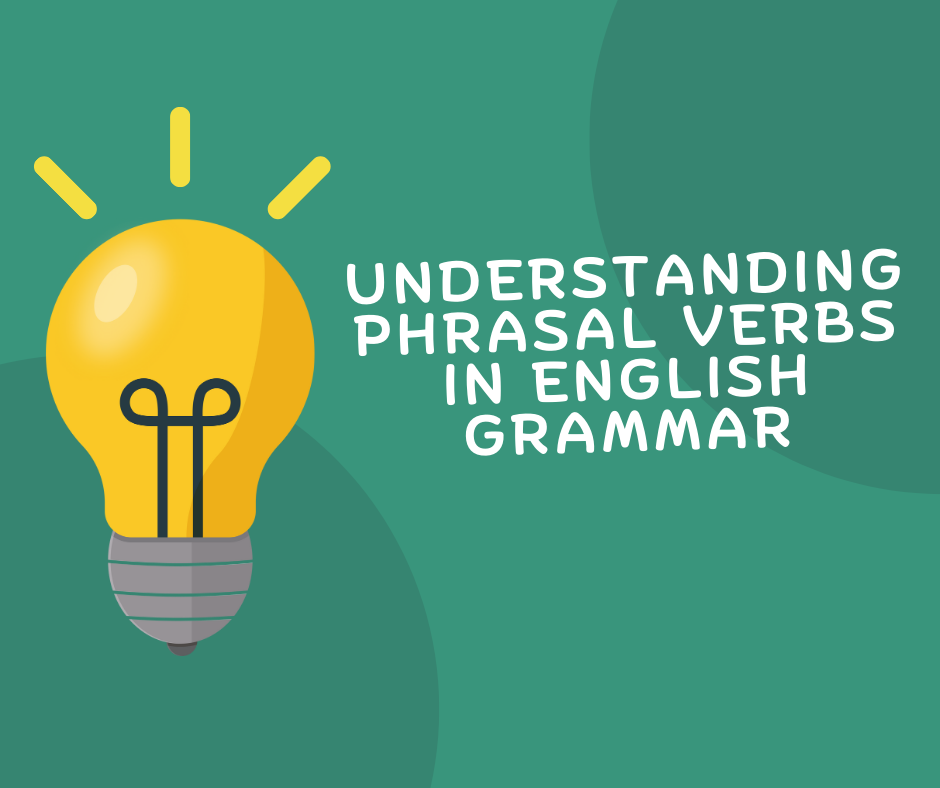
English grammar is replete with various elements that add complexity and nuance to the language. Among these elements, phrasal verbs stand out as a distinctive feature, playing a crucial role in both spoken and written communication. Phrasal verbs consist of a main verb combined with one or more particles (prepositions or adverbs), and mastering them is essential for achieving fluency in English.
What are Phrasal Verbs?
A phrasal verb is formed by combining a verb with one or more particles, creating a new meaning that often differs from the individual words. These particles can be prepositions or adverbs. For example, the verb “look” combined with the preposition “up” creates the phrasal verb “look up,” which means to search for information.
Types of Phrasal Verbs
Phrasal verbs can be categorized into two main types:
Transitive and intransitive
- Transitive Phrasal Verbs:
-
-
- These verbs are followed by an object, and the meaning of the verb often depends on the particle used. For instance, in the phrasal verb “look up,” the object could be a piece of information you are searching for.
- Example: She looked up the word in the dictionary.
-
- Intransitive Phrasal Verbs:
-
- These verbs do not require an object. The meaning is often idiomatic, and it might not be apparent from the individual words.
- Example: The children quickly ran out of the room when they heard the bell.
Separable and Inseparable Phrasal Verbs
Phrasal verbs can also be classified as separable or inseparable based on whether the object can be placed between the verb and the particle.
- Separable Phrasal Verbs:
-
-
- In these verbs, the object can come between the verb and the particle or follow the particle.
- Example: She picked the book up. OR She picked up the book.
-
- Inseparable Phrasal Verbs:
-
- In these verbs, the object must follow the particle.
- Example: They broke up last year.
Common Usage in Daily Communication
Phrasal verbs are pervasive in everyday English, and their usage adds a colloquial and natural touch to the language. While some learners find them challenging due to their varied meanings, mastering phrasal verbs enhances one’s ability to understand and express ideas effectively.
Here are some examples of commonly used phrasal verbs:
- Call off:
-
-
- Meaning: To cancel
- Example: The meeting was called off due to unforeseen circumstances.
-
- Bring up:
-
-
- Meaning: To mention or introduce a topic
- Example: She brought up an interesting point during the discussion.
-
- Give in:
-
- Meaning: To surrender or yield
- Example: After a lengthy negotiation, they finally gave in to the demands.
Tips for Learning and Using Phrasal Verbs
- Context is Key:
-
-
- Pay attention to the context in which phrasal verbs are used, as this often provides clues to their meanings.
-
- Read Widely:
-
-
- Exposure to a variety of written material helps in encountering and understanding different phrasal verbs in diverse contexts.
-
- Practice Regularly:
-
-
- Actively use phrasal verbs in your speaking and writing to reinforce their usage and meanings.
-
- Use Reference Materials:
-
- Consult dictionaries or language resources that provide explanations and examples of phrasal verbs.
Have a look at EngVarta’s Phrasal Verbs series! In this video, we dive deep into the phrasal verbs associated with the word “Look.” Understanding phrasal verbs is crucial for English fluency, as they are commonly used in everyday conversation. Join us as we unravel the meanings, uses, and nuances of various ‘Look’ phrasal verbs, making your journey in English learning more comprehensive and enlightening.
🔍 What You’ll Learn:
- Detailed explanations of phrasal verbs like ‘look up’, ‘look after’, ‘look into’, and more.
- Contextual examples to showcase how each phrasal verb is used in everyday language.
- Tips for remembering and applying these verbs in your own conversations.
📚 Phrasal Verb Mastery:
- Discover the versatility of ‘Look’ in phrasal verb formations.
- Learn the subtleties that differentiate similar phrasal verbs.
- Enhance your understanding of English grammar in a practical way.
📘 Building Fluent English:
- Exercises to practice and reinforce your understanding of ‘Look’ phrasal verbs.
- Strategies to incorporate phrasal verbs into your active vocabulary.
👥 Engage with Our EngVarta Community:
- Share sentences you’ve created using ‘Look’ phrasal verbs.
- Get feedback and insights from fellow learners and experts.
- This series is not just about learning phrasal verbs; it’s about gaining the confidence to use them fluently in your daily English. Stay tuned for more videos covering different phrasal verbs in our series!
Download EngVarta for more in-depth English grammar practice.
Conclusion
In conclusion, phrasal verbs are an integral part of English grammar, contributing to the language’s richness and versatility. While they may pose a challenge for learners, understanding their meanings and usage enhances one’s ability to communicate effectively. Regular practice, exposure to diverse contexts, and a keen awareness of how phrasal verbs function will undoubtedly contribute to mastering this essential aspect of English language proficiency.

